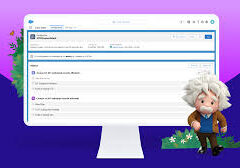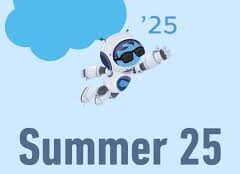Expanding its reach beyond CRM, Salesforce.com has launched a new service called AppExchange OEM Edition, aimed at non-CRM service providers. This move allows on-demand service providers in various industries to leverage Salesforce’s powerful platform.
The OEM edition extends the Salesforce.com platform to third-party SaaS providers, enabling them to tap into its core features, such as the operating system, customization tools, Web Service APIs, workflow, and business logic, according to Kendall Collins, Salesforce’s Vice President of Product Marketing.
For example, a real estate management software vendor could utilize Salesforce’s dashboard, customizing it to track real estate data like foreclosures instead of sales opportunities.
AppExchange OEM Edition will be available for per user per month, with users managing the pricing and availability of their specific solutions. This expansion highlights the growing adoption of the on-demand model in industries beyond CRM.
ISV (Independent Software Vendor) companies commonly sell licenses for their apps via the Salesforce AppExchange, which is one of the most popular methods. For example, they might sell five licenses for a managed package app. With the new AppExchange checkout features powered by Stripe (previously Recurly), processing payments for these licenses is straightforward.
Some companies choose to make revenue by selling CRM licenses in addition to their apps, often offering customers discounted CRM licenses. These ISV licenses are custom-built and contractually limited to specific objects and permissions. A significant level of trust is involved, as Salesforce can audit the end-customer at any time to ensure they are only using the objects specified in the agreement.
When it comes to pricing, ISVs often charge in two parts: one fee for the app license and another for the CRM license. However, this is typically bundled as a single charge to the customer for simplicity.
Customers can adopt these ISV apps as part of a broader Salesforce org, using several onboarding methods, including Trialforce, an AppExchange free trial, or an install with a trial period expiration date. These apps are often integrated into larger business processes, providing value beyond their standalone features.
OEM Licensing:
OEM (Original Equipment Manufacturer) and Embedded licensing are essentially the same. OEM licenses are designed for internal apps. For portals, ISV Portal licenses are used, though these do not include Chatter and must interact via a Force.com site. These licenses function similarly to Authenticated Website or Customer Portal licenses.
OEM licensing allows companies to use Salesforce as a controlled environment to present their app. For instance, a developer might opt for the OEM model to prevent end-users from making any customizations. The app would have one admin user who sees that it is running on Salesforce, while other users interact with it through a custom interface built on a Force.com site.
A common concern for OEM app developers is pricing. While Chatter Plus licenses cost $15 per month (for CRM only), developers often seek clarification on the cost of OEM licenses from Salesforce, hoping for a rate lower than $15 per user per month. They must also factor in their own fees on top of the Salesforce OEM license price.
Key Differences Between ISV and OEM Licensing:
- OEM Licenses: Allow users to be assigned to a specific app, and users can only see the fields and functionality within the app’s namespace. These apps offer a more controlled environment, with no access to customization beyond the application itself.
- ISV Licenses: Provide broader access, allowing developers to add custom fields and extend functionality beyond what is included in the app. ISV licenses are often sold on the AppExchange as add-ons to enhance Salesforce.
In an OEM setup, at least one full Salesforce System Administrator is required in the customer’s org. However, this admin does not have the ability to add more licenses to the org or alter the customizations visible to end-users, so their influence over the app’s functionality is limited.
ISV app licenses offer more flexibility and are commonly available on the AppExchange, OEM apps represent a complete solution that uses Salesforce as a platform but often hides the underlying Salesforce infrastructure from end-users.
🔔🔔 Follow us on LinkedIn 🔔🔔














